
What’s the best way to ensure your product hits the right chord with users? A user needs analysis conducted with product analytics data lets you build products that address user pain points and exceed their expectations.
In this article, we dig deeper into what user needs analysis is and how you can get started with it.
Try Userpilot Now
See Why 1,000+ Teams Choose Userpilot

Overview of user needs analysis
- User needs analysis refers to using various techniques to understand users’ aspirations, goals, and pain points.
- It helps you make data-driven decisions to enhance your product and keep up with changing user needs to improve user satisfaction.
- You can perform a needs analysis using various methods, such as user feedback surveys, focus groups, and interviews. Usability testing can also come in handy.
- The first step to conducting this analysis is to set a SMART goal for your analysis.
- Then, select a user persona to drill into a particular segment’s preferences and problems.
- Analyze user behavior data collected to identify patterns and trends.
- Also, collect qualitative data through open and close-ended surveys from various user segments.
- Guide your product development process with the insights you’ve gathered.
- Userpilot can help you monitor user behavior and collect qualitative feedback with in-app surveys. Book a demo now.
What is a user needs analysis?
User needs analysis employs various techniques to help you gain deeper insights into your user base’s aspirations, goals, and motivations. It also enables you to understand user pain points and preferences.
A needs analysis validates your assumptions regarding your users so you can better guide product development, marketing, and launches.
Why do you need to analyze user needs?
If you want to build a product that attracts, engages, and retains the right users, performing user needs analysis is non-negotiable. Let’s take a look at its key benefits.
- Understanding user pain points – Analyzing user needs helps you build a solid understanding of user challenges. It gives you an idea of what will motivate them to use your product, allowing you to build features shaped around their needs.
- Keeping up with changes in how users behave – With this analysis, you can stay on top of changing target audience preferences and behavior patterns. It ensures that your product adapts as your users’ needs change.
- Creating data-driven product strategies – It takes the guesswork out of product development. Instead, you can use concrete data to determine what features, functionalities, and upgrades will align with your audience’s requirements.
- Increasing user satisfaction – When you build a product tailored to your target user’s expectations and needs, it improves the overall user experience (UX). That, in turn, skyrockets user satisfaction levels and even helps you engage and retain more users.
- Identifying and removing friction – With user needs analysis, you can dig deep into their journey and identify the challenges your target audience faces when navigating your product. It comes in handy for pinpointing and eliminating areas of friction, resulting in enhanced UX.
User research methods to identify user requirements
Analyzing user needs is an integral part of building a product that stands out from the crowd. But what’s the right way to do it?
Here are a few user research techniques that’ll come in handy:
1. User feedback surveys
How do you know what users want? One of the most effective methods is to collect first-hand feedback using in-app surveys.
You can set up and trigger in-app surveys at specific points in a user’s journey to learn more about user requirements, needs, pain points, and preferences. For instance, when a new user logs in, you can use a welcome survey to ask about the tasks they want to accomplish.
On the other hand, if a user has been using your product for some time, you can use in-app surveys to dig deeper into their experience.
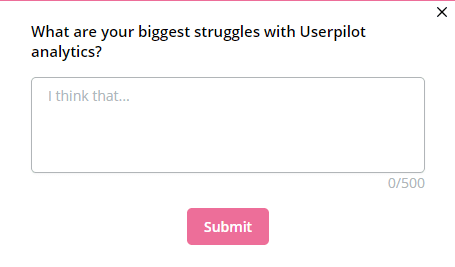
A tool like Userpilot comes in handy for creating and implementing feedback surveys. You can choose from several survey templates, such as NPS surveys and CES surveys, and include a mix of open-ended and close-ended questions. You can even use branching logic to modify the flow of questions based on previous responses.
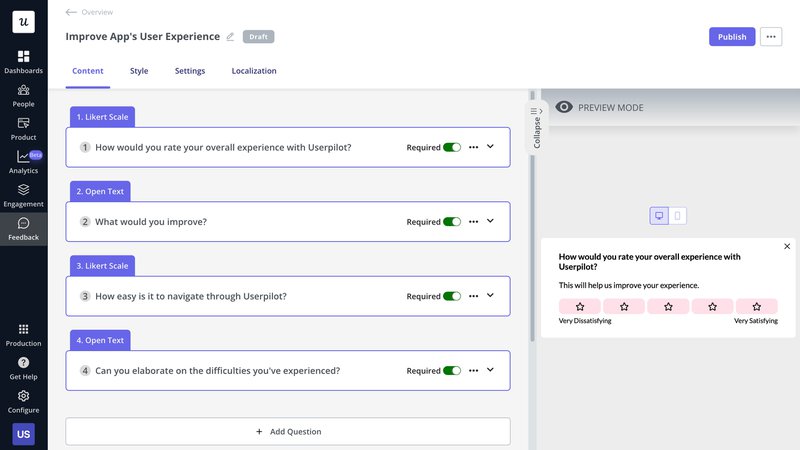
In-app user surveys are a good way to collect feedback from active users. In order to collect feedback from inactive or potential users, you can deploy email surveys.
If you’re already using a CRM platform like HubSpot, you can integrate it with Userpilot. That way, you can leverage existing data from Userpilot to send relevant email surveys via HubSpot.

2. Focus groups
A focus group is an effective user research technique for collecting in-depth qualitative feedback, much like usability testing. It involves gathering a small group of users (usually 6-12 participants) and encouraging them to engage in discussions and debates.
Participants are free to share their experiences, ideas, and opinions about your product, and you can record their discussions. A moderator is present to steer conversations in the desired direction while the users interact.
Focus groups are a valuable resource for informing key product development decisions, such as the design process and UI layout. Also, you can use them for market research and validation.
3. User interviews
Interviews help you engage in one-on-one conversations with existing, new, and potential users. It makes them an excellent way to dig deeper into their minds and learn more about why they behave the way they do.
You can collect in-depth qualitative insights about a user’s journey and understand what works for them. Additionally, you can personalize your follow-up questions based on how the conversation is going.
But how do you encourage more people to participate in user research? A clever tactic is to offer an incentive, such as a discount or gift, in exchange.
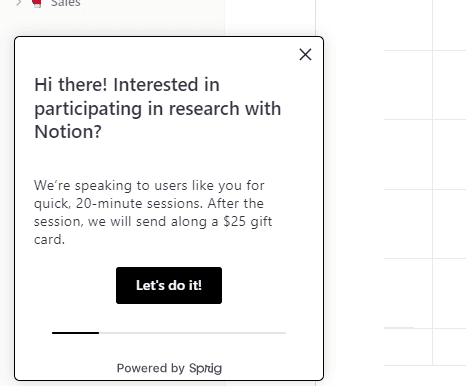
4. Usability testing
Usability testing is a technique that helps measure how easy it is for people to use your product. It can help identify friction points users encounter when navigating your product. It also helps understand whether users can successfully realize their goals with your product.
If you want to assess product usability for user needs analysis, you can choose from the following types of tests:
- Guerilla testing – You go to a public location, ask people to try your product (or a part of it), and share their feedback.
- Remote usability testing – You use screen-sharing tools or video conferencing apps to observe how people use your product and collect feedback from them.
- 5-second test – You ask users to experience a part of your product for five seconds and share their feedback afterward.
- First-click testing – You focus on determining how easily users can identify the happy path to complete a given task.
How to perform a needs analysis to extract valuable insights
User needs analysis takes more than launching an in-app survey or conducting user interviews. You need a concrete plan to retrieve the right insights from the analysis, customer surveys, and more.
Here’s a step-by-step guide to help you get started:
1. Define your objectives for user needs analysis
First things first—you must understand why you want to perform a user needs analysis.
Are you looking to validate the idea for a new product? Do you want to identify ways to make users stick around for longer when trying your product? Or do you want to expand user accounts by tempting them with advanced features and add-ons?
Knowing the answers to these questions will give you a clear idea of your objectives. It’ll help you focus on the right user personas and research methods.
It’s a good idea to use the SMART (Specific, Measurable, Achievable, Realistic, Time-bound) goal-setting framework to define goals and KPIs.
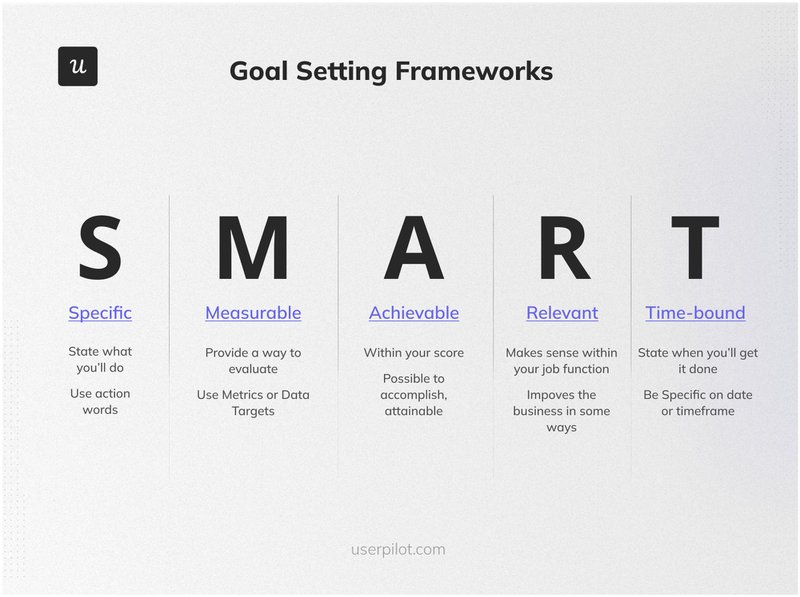
2. Choose your user personas
Your customer base comprises different user segments, each with unique aspirations, motivations, pain points, and preferences. Selecting a specific user persona for your analysis will help you drill down on that particular segment’s needs.
The key is to outline detailed user personas, including their professional and socio-economic backgrounds, interests, and struggles.

3. Analyze user behavior data to identify patterns
Now that you’ve selected a user persona, it’s time to monitor and analyze their in-app behavior. A product analytics tool like Userpilot is handy for collecting user behavior data and identifying patterns.
You can leverage techniques, such as funnel and trend analysis to extract more in-depth insights. For instance, with funnel analysis, you can understand how users move from one step to another when completing a task and what causes them to drop off.
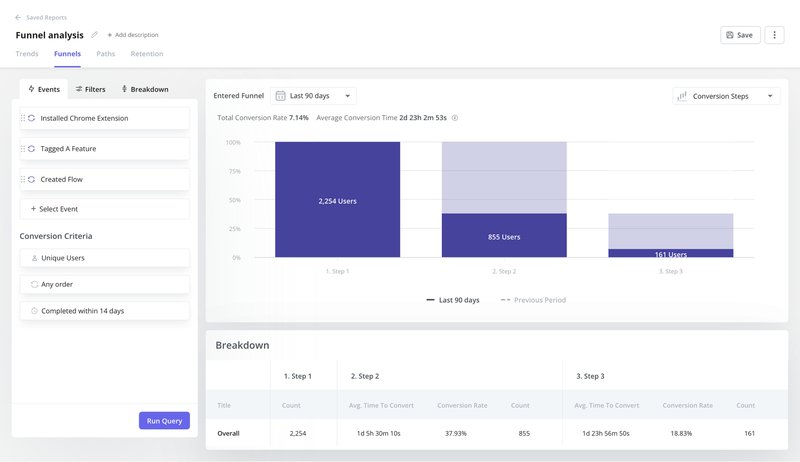
Similarly, trend analysis can help you identify and harness recurring patterns in user behavior.
4. Collect qualitative data with surveys to understand user expectations
Next, it’s time to dig deeper into user needs with in-app surveys. These surveys provide an effective way of collecting qualitative feedback from users about their experiences and expectations.
You can ask questions about the tasks they want to accomplish with your product and the challenges they face when using it. With Userpilot, you can choose from a variety of templates to implement different types of in-app surveys.
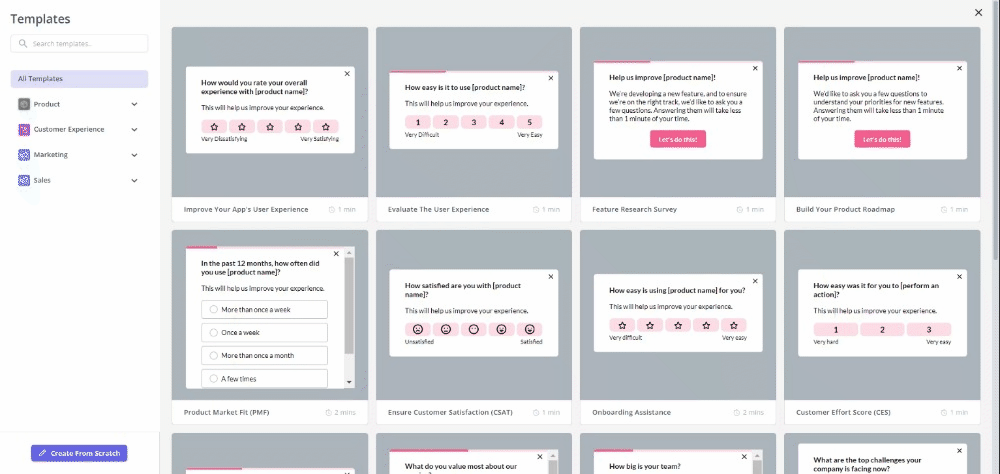
5. Guide the product development process
Comprehensive user needs analysis takes the guesswork out of product development. With all the qualitative and quantitative data collected in the previous steps, you’ll be better equipped to determine what users want. You can use these findings to guide design and product teams as they develop new features and product enhancements.
Create your product roadmap and add features and enhancements based on their priority. A plan allows multiple teams to collaborate in product development and ensure timely completion.
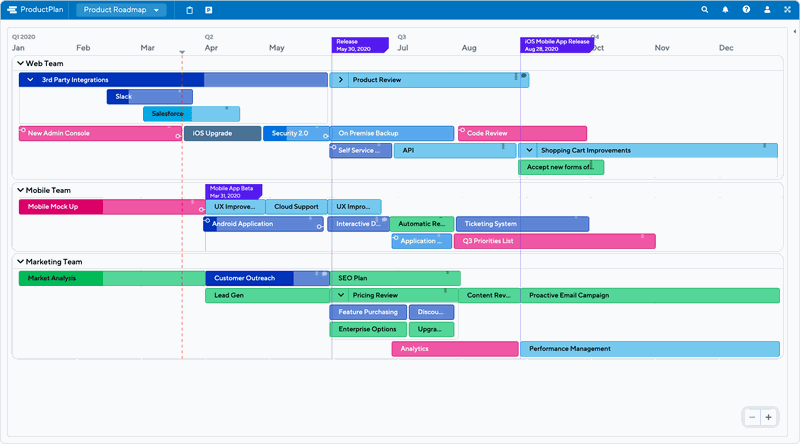
As you implement these changes, make sure you continue monitoring user activity and behavior. It’ll help you understand whether the modifications are meeting user needs and identify further areas of improvement.
Conclusion
Analyzing user needs offers several benefits, including improved user engagement and satisfaction levels. You can also leverage insights from user needs analysis to inform product design and development decisions.
A product analytics platform such as Userpilot helps SaaS companies collect feedback, monitor user activity, and analyze their behavior. These insights make data-driven product decisions possible. To see how Userpilot can help you with user needs analysis, book your demo today.






